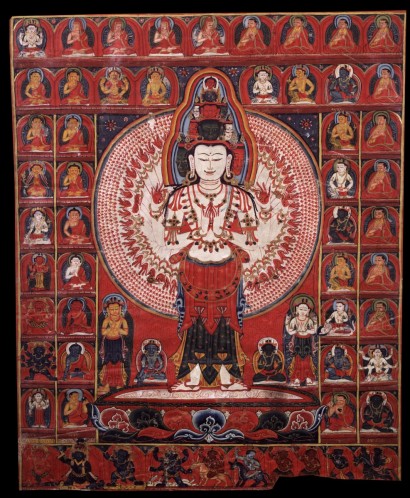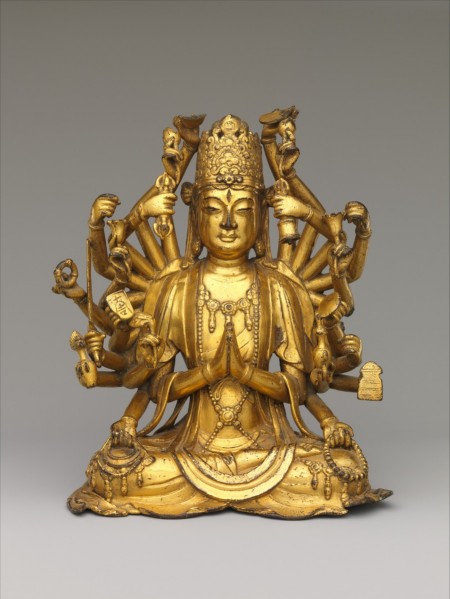Tibet, 14th–15th century; ground mineral pigment on cotton; 29 1⁄4 x 25 1⁄4 x 1 1⁄4 in.; The Rubin Museum of Art, New York, C2006.66.190.
Bodhisattva Avalokiteshvara with One Thousand Hands and One Thousand Eyes
China, Dali Kingdom, 11th–12th century; gilt arsenical bronze, lost wax cast; 8 1/4 x 7 x 4 3/8 in; The Metropolitan Museum of Art, Rogers Fund, 1956, 56.223, photo: www.metmuseum.org.
Guanyin appears here in the thousand-armed form, sometimes called Dabei, or Great Compassion. This complex manifestation of Avalokiteshvara is much more difficult to sculpt than to paint, so sculptors throughout Asia invented a novel system to suggest the thousand arms. In this remarkably well-preserved example, the gleaming figure has only twenty-two arms. The two frontal ones are in anjali mudra; the other twenty hands hold significant implements. This impressive array of limbs successfully conveys Avalokiteshvara’s infinite reach. And because he has an eye inscribed on every palm, his compassionate gaze is limitless.





